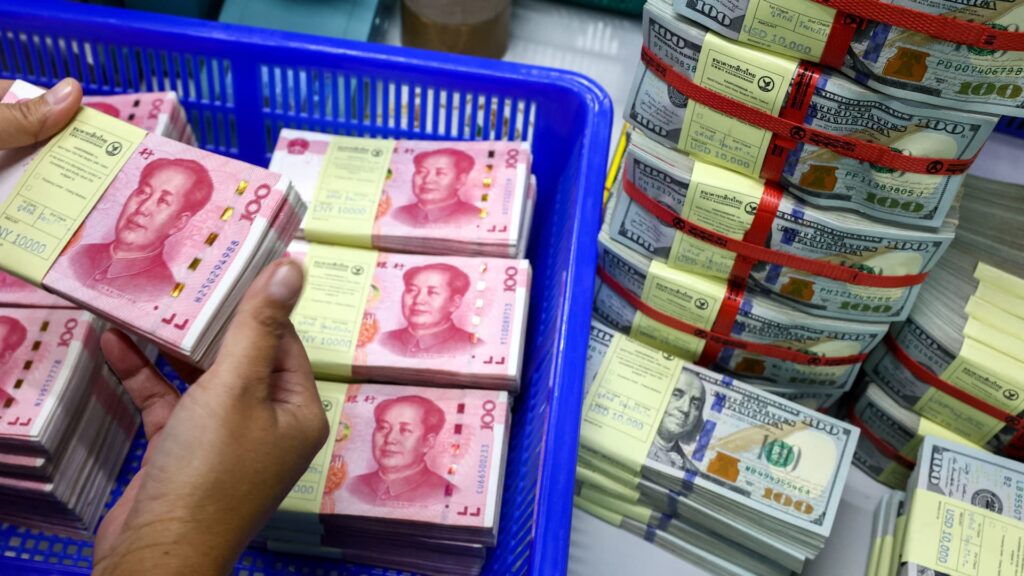A bank employee count China’s renminbi (RMB) or yuan notes next to U.S. dollar notes at a Kasikornbank in Bangkok, Thailand, January 26, 2023.
Athit Perawongmetha | Reuters
BEIJING — Venture capitalists in China that once rose to fame with giant U.S. IPOs of consumer companies are under pressure to drastically change their strategy.
The urgency to adapt their playbook to a newer environment has increased in the last few years with stricter regulations in China as well as the U.S., tensions between the two countries and slowdown in the world’s second-largest economy.
Here are the three shifts that are underway:
1. From U.S. dollars to Chinese yuan
The business model for well-known venture capital funds in China such as Sequoia and Hillhouse typically involved raising dollars from university endowments, pension funds and other sources in the U.S. — known in the industry as limited partners.
That money then went into startups in China, which eventually sought initial public offerings in the U.S., generating returns for investors.
Now many of those limited partners have paused investing in China, as Washington increases its scrutiny of U.S. money backing advanced Chinese tech and it gets harder for Chinese companies to list in the U.S. A slowdown in the Asian country has further dampened investor sentiment.
That means venture capitalists in China need to look to alternative sources, such as the Middle East, or, increasingly, funds tied to local government coffers. The shift toward domestic channels also means a change in currency.
In 2023, the total venture capital funds raised in China dropped to their lowest since 2015, with the share of U.S. dollars falling to 5.3% from 8.4% in the prior year, according to Xiniu Data, an industry research firm.
That’s far less than in the previous years — the share of U.S. dollars in total VC funds raised was around 15% for the years 2018 to 2021, the data showed. The remaining share was in Chinese yuan.
Currently, many USD funds are…
Read the full article here





